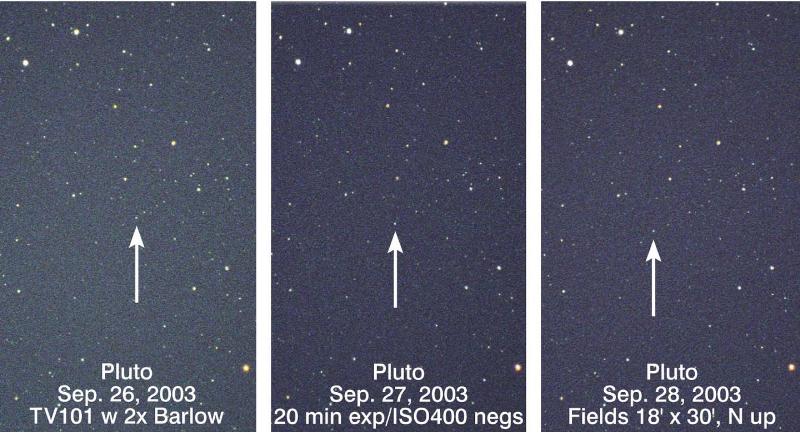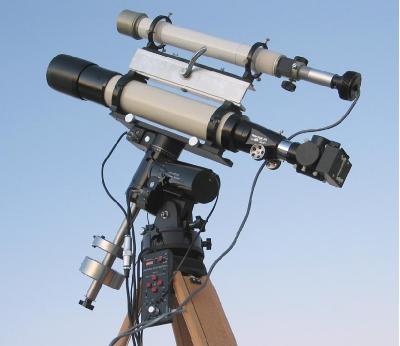|
Clyde Tombaugh discovered Pluto on February 18, 1930 after “inspecting” two photographic plates taken of the same section of the sky, six days apart, a few weeks earlier. It was not by accident that he found the then, 9th planet, for his job was to systematically image the area of the sky around the ecliptic (all of the planets have paths in the sky close to the ecliptic) in the hopes of finding the long sought and elusive “Planet X,” as it was referred to back then. When he was not photographing the stars, he was comparing pairs of glass photographic plates to find a “star” that moved between them. Clyde took 60 minute exposures using a 13-inch diamter f/5.3 refractor (focal length of 66 inches) called an astrograph, a telescope specifically designed to take wide-angle photographs. The Lowell Observatory (in Flagstaff, Arizona) does not have any information about the film speed of the original 14x17-inch glass plates used, but after seeing copies of the original discovery plates, I estimate that the film speed was no higher than 50, probably 25 or lower.
|
|
In Clyde’s honor, I imaged Pluto for 20 minutes on ISO 400 negative film, using a 4-inch diameter refractor (a Tele Vue 101) “working” at f/10.8 (focal length of 43 inches obtained with a barlow that doubles the actual focal length of 540mm/21.5-inches). The biggest advantage I had over Clyde was knowing Pluto’s exact location which I obtained from the annual Astronomical Calender by Guy Ottewell. Pluto was around magnitude 13.8 at the time I took these pictures. The visual limit of a 4-inch diameter telescope is about magnitude 11.8 (the faintest that can be seen through the telescope with the eye in dark skies), so photographically, I was well within the capabilities of the 4-inch scope. The 13-inch astrograph had 10 times more light gathering capability than my 4-inch refractor but I used film with 73 years of advancements, allowing me to easily image Pluto with 20 minute exposures. See the picture below for the setup I used to take the pictures of Pluto.
|
|


